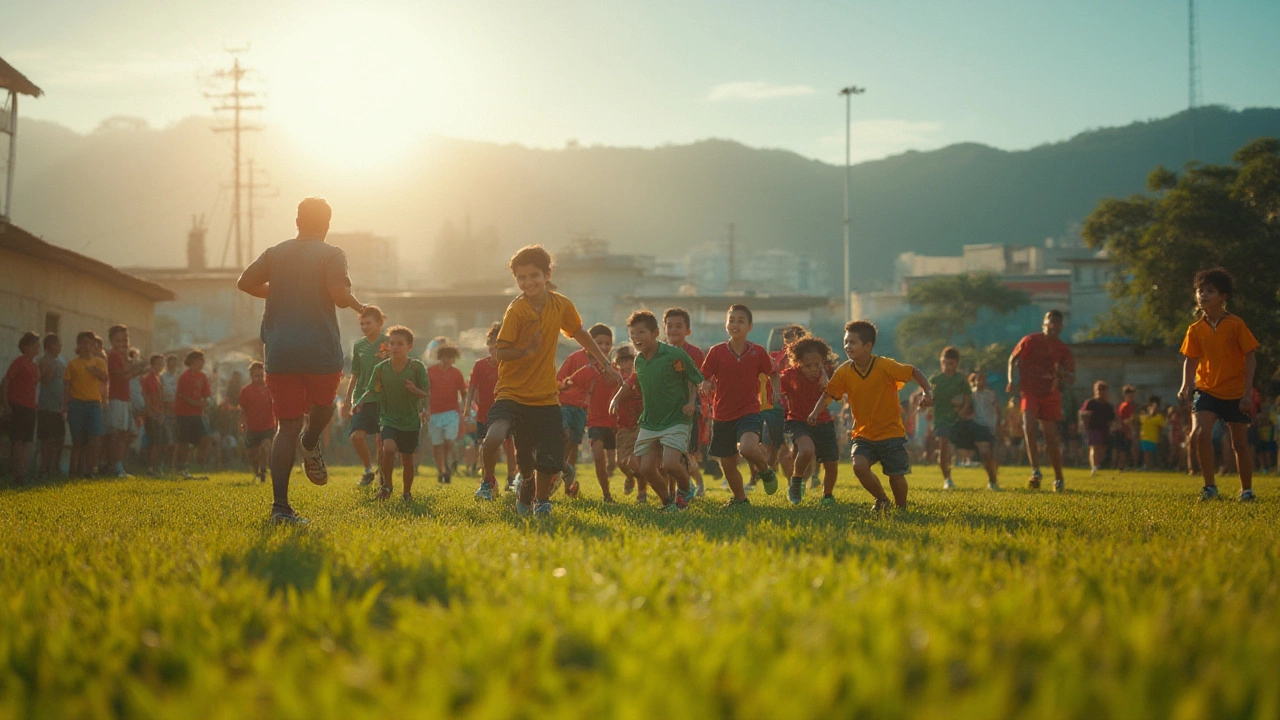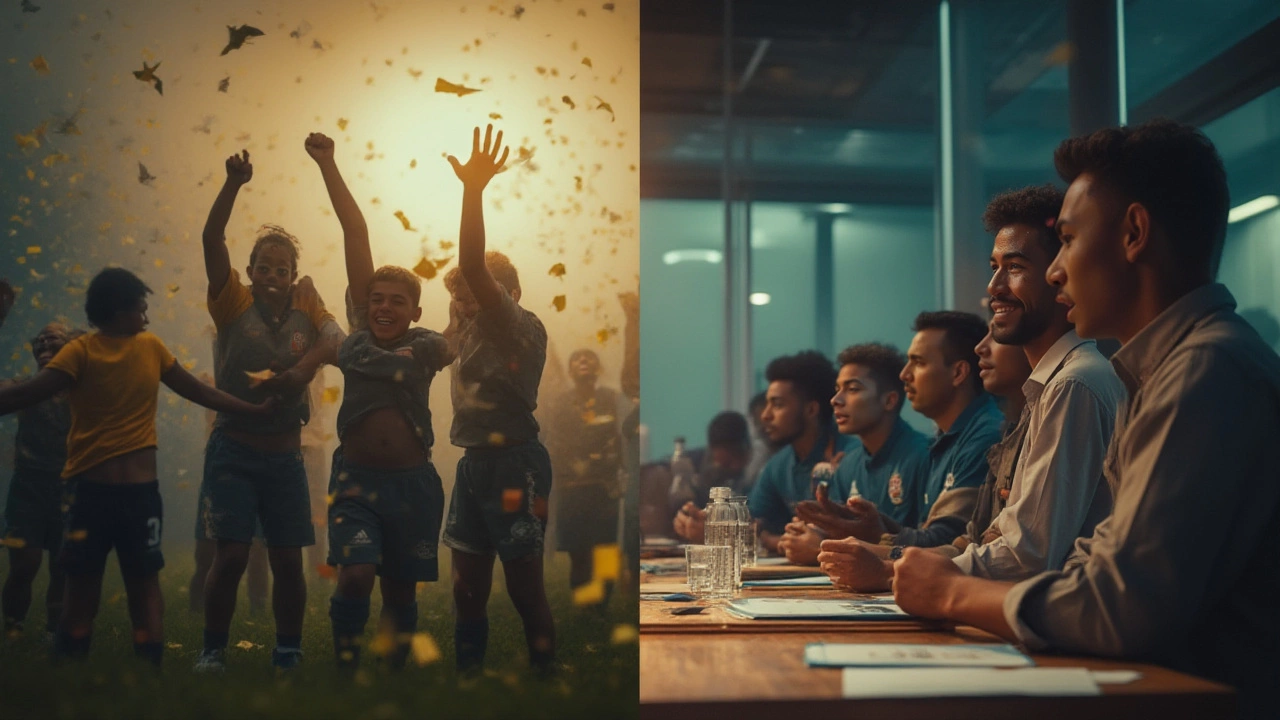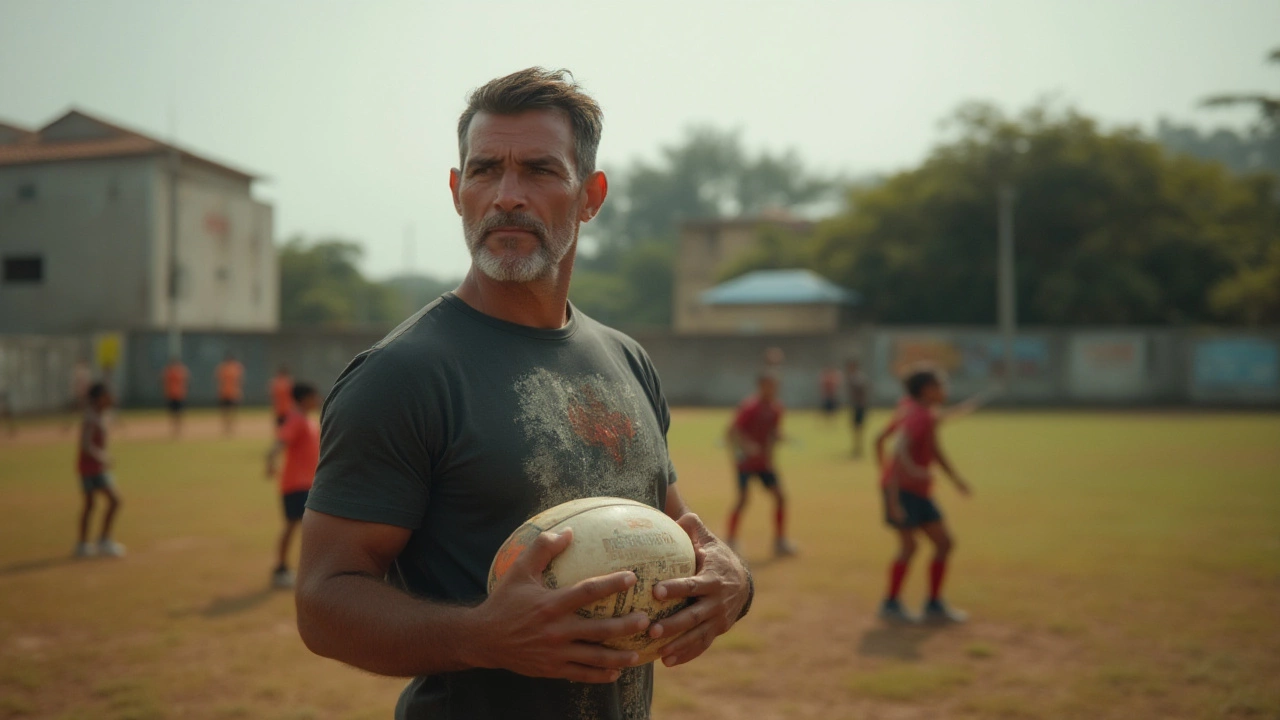Rugby’s Rise in Brazil: Growth, Challenges, and The Future

Think soccer owns every inch of Brazilian sports culture? Think again. If you spent last year in São Paulo on any random Saturday, you might spot a line of determined teens learning dropkicks. The game isn’t just a foreign sideshow anymore. Rugby is weaving itself into the fabric of Brazil’s noisy, passionate sports scene, driven by a wave of new fans, youth programs, and a stubborn group of believers who think this muscular sport has a future beyond just the expat crowd. But how far has it really come? And what’s holding it back from explosive growth in a country that lives and breathes football?
The Unexpected Roots and Recent Surge of Rugby in Brazil
When most people think of sports in Brazil, rugby doesn’t exactly pop up next to beach volleyball or samba-splashed futsal. Yet, rugby’s brushes with Brazil go back farther than you think. British immigrants brought the game to Rio de Janeiro as early as 1891, long before Pelé dazzled football fans or anyone drank coconut water on Copacabana. Of course, it never seriously threatened soccer’s dominance, but the foundation was there — sprinkled with amateur leagues and the occasional passionate club holding on to tradition. Fast forward, and the real turning point arrived in the late 2000s, helped by Brazil’s global ambitions and the rugby sevens debut in the 2016 Rio Olympics. That wasn’t just a party for tourists. Suddenly, kids in São Paulo and Porto Alegre started to see rugby on TV, not just in highlight reels from faraway England, but played by people who looked like them.
Forgotten for decades, the seeds for rugby’s boom really sprouted thanks to Brazil’s inclusion in the South American Rugby Championship (the CONSUR) and the visible push by the Brazilian Rugby Confederation (CBRu). According to the CBRu, the number of registered rugby players jumped from just over 5,000 in 2010 to about 29,000 by 2024. Even World Rugby’s 2023 annual report flagged Brazil as “one of the fastest-growing rugby nations outside the traditional powerhouses.” And this isn’t just men in muddy boots. There’s been a 22% rise in registered women’s players since 2018, making the sport a surprising beacon for gender balance in a macho culture. Add to that the influence of professional players like Felipe Sancery and the tireless campaigns run in favelas, and rugby suddenly feels less like an import and more like a possibility.
Another wild fact: In 2021, Brazil’s national rugby sevens women’s team made it all the way to the World Rugby Sevens Series core tournament, pulling off unexpected wins against teams with vastly bigger budgets. That’s flipping the script on what minor nations can do, especially for Brazil where investment in the sport still trails way behind volleyball or basketball. The Rugby World Cup and Olympic rugby coverage by Globo—a television giant—has brought the sport into Brazilian living rooms, shifting it from curiosity to credibility. According to Kantar IBOPE Media, rugby viewership during the 2016 Olympics peaked at 12 million unique viewers. Kids’ clinics sprouted, especially in Rio and the south, feeding curiosity and giving young athletes a tough, team-driven alternative to ordinary PE.
To see the numbers in perspective, check out this comparison table:
| Year | Registered Rugby Players (Brazil) | Registered Rugby Clubs | Women Players (%) |
|---|---|---|---|
| 2010 | 5,000 | 110 | 12% |
| 2015 | 15,200 | 258 | 16% |
| 2020 | 23,800 | 310 | 19% |
| 2024 | 29,000 | 340 | 22% |
So what’s feeding this rugby boom? Social projects in underserved communities have a lot to do with it. Projects like “Um try pela vida” and “Rugby para Todos” are using rugby as a tool for self-esteem, teamwork, and channeling raw energy into something positive. Teachers say that rugby often gives overlooked kids—especially girls—a fresh sense of belonging. João, a 13-year-old who swapped gang pressures for rugby, puts it best: “Here, your past doesn’t matter. On this field, everybody’s family.”

Challenges That Keep Rugby From Breaking Out
Now, about that family—it’s still the underdog. Rugby in Brazil faces some tough tackles, and not just on the field. The biggest headache? Funding. While the CBRu has made big moves, most clubs still rely on game-day contributions, small sponsorships, and sometimes paying out of their own pockets for travel, kit, or tournament fees. Major sports funding from the government and corporate world drifts toward football, volleyball, or even jiu-jitsu. So, for many rugby clubs, the only way forward is that classic Brazilian improvisation—players turning coaches, parents turning into bus drivers, or using WhatsApp groups to organize everything from practice to pizza orders.
The country’s geography is another curveball. Brazil is gigantic—bigger than the continental USA. Traveling from Manaus to Porto Alegre could take longer than some European national competitions! For youth or community teams, this makes national tournaments both logistically and financially tough. Most competitive rugby is squeezed into the big cities—São Paulo has about a third of the country’s clubs—so rural or northern kids often have to watch from the digital sidelines.
Add to that the cultural football grip. Brazil’s soccer madness doesn’t just eat up attention and cash. It also claims fields, leaving scraps for rugby coaching, practice times, and matches. Even at schools, PE teachers rarely have formal rugby training, so introducing the game is an uphill slog. To change minds, rugby needs to tell a better story. Luckily, real-life stories like the underdog wins of “Yaras” (the Brazil women’s sevens) and the Rio-based children’s leagues are beginning to chip away at those old-school soccer-only ideas.
Media can be fickle, too. Sure, the Olympic sevens were a TV hit, but regular domestic rugby matches barely make it onto free-to-air channels. This creates a classic catch-22: not enough eyeballs for sponsors to invest, not enough investment to improve the game’s profile or facilities. People like Pedro Cardoso, coach of the Jacareí Rugby Club, have found creative ways around this—livestreaming matches on Instagram, putting highlights on YouTube, inviting influencers to try out the sport on TikTok. One inventive example: In the pandemic, Corinthians Rugby held Zoom training sessions with fans, turning home workouts into digital rugby clinics.
There are also misconceptions about injuries. Brazilian parents aren’t used to seeing rugby—sometimes all they imagine are helmetless collisions and bruised knees. Educating them on safety, showing that proper tackling and coaching makes rugby no riskier than most contact sports, is slowly opening doors (and getting insurance providers to play ball).
For the numbers crowd, check out Brazil versus Argentina when it comes to rugby investment:
| Country | Annual Rugby Funding (USD) | Number of National Team Contracts | International Tournament Appearances (since 2015) |
|---|---|---|---|
| Brazil | $2.4M | 28 | 11 |
| Argentina | $12M | 57 | 34 |
That’s a big gap, but even with limited resources, Brazil is punching above its weight on the international stage. The sport’s strong community roots and the social work it does matter as much to its followers as making the Rugby World Cup. Getting more government recognition and a slice of Brazil’s “Lei de Incentivo ao Esporte” (Sports Incentive Law) tax breaks could help turn things around in the next five years. Players and coaches are hopeful, but nobody’s under any illusion: turning rugby into a major sport will be a marathon, not a sprint.

Where Rugby Can Go Next: Growth Tips and What’s On The Horizon
The future’s looking a lot less lonely for rugby fans in Brazil. People are starting to see rugby as more than just a cool diversion for tourists or expats. According to the CBRu’s 2024 development plan, the aim is to have at least 45,000 registered players and 500 active clubs by 2030. That’s ambitious—doubling the current numbers—but not impossible if the right pieces fall into place.
Want to get in on the action? There are more entry points than ever. Dozens of schools now run “tag rugby” programs—a minimal-contact version that kids love and parents trust. Community centers in places like Recife and Florianópolis have rugby clinics with proper gear thanks to partnerships with World Rugby and international donors. For adults, club rugby is a fast-growing scene. Even in cities dominated by futebol, you can now find social rugby leagues where the after-game barbecue is as much a draw as the tackling itself. Mixed-gender leagues (where men and women compete together) have seen a 40% increase since 2020, breaking down old taboos about women and contact sports.
Some extra tips for folks who want to join this movement:
- Check out the CBRu’s official map to find your nearest rugby club—over 340 as of 2024.
- Follow Brazilian rugby on Instagram and YouTube. Several clubs post free tutorials for beginners, plus match highlights from around the country.
- Look for annual rugby festivals, especially the Festa do Rugby in São Paulo and Rio Rugby Club Sevens. They’re family-friendly, full of food trucks, street art, and quick intro games for newbies.
- If you’re a teacher or run a youth organization, reach out to social projects like Rugby para Todos for free starter kits and coaching clinics.
- Universities now offer beginner rugby courses that count toward PE credit—worth checking if you’re a college student hunting for something beyond futsal or athletics!
Someone wondering if rugby will ever rival Brazil’s football obsession might be asking the wrong question. What’s happening is distinct: rugby is carving out its place, bringing fresh values—respect, diversity, discipline—where they’re needed most. Maybe the most telling detail isn’t on the scoreboard, but on a Saturday morning in a São Paulo park, where you’ll hear a coach explain, “In rugby, we celebrate everyone—win or lose.” That’s something worth cheering for, even if the stadium’s still half empty for now.
